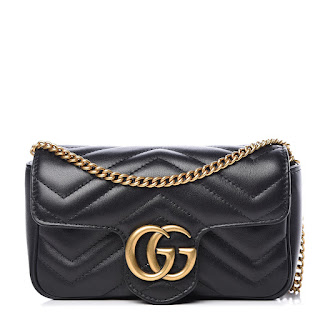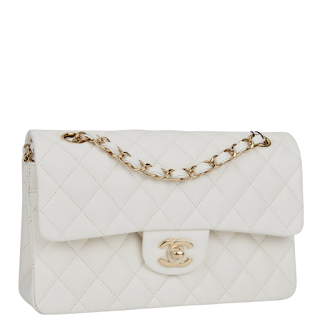Unveiling the Enigma of Replica Brand Be Roma: Luxury's Ethical Mirage?
The growing shadow of replica brands in the sophisticated tapestry of luxury fashion is a tale that oscillates between seduction and scandal. The emergence of brands like Be Roma titillates the senses of many a fashionista, raising questions about the allure of replicas in a market that has long prided itself on exclusivity and originality. Yet, beneath the glimmering surface of these deceptively similar creations, lies a web of intricate, often controversial, threads that intertwine the industry with issues of ethics and sustainability.
In this exposé, we unravel the enigma of Be Roma, shining a light on the burgeoning replica brand movement. We explore the multifaceted motivations driving popularity, the ethical dilemmas faced by consumers and creators, and a vision for a more sustainable future in luxury fashion.
The Temptation of Be Roma: A Nod to Luxury, a Wink at Price
Replica brands are a category of counterfeit goods that offer near-identical copies of high-end designs at a fraction of the cost. Be Roma, in particular, has made its mark, specializing in luxury leather accessories and claiming a niche position in the market for its impeccable replication of renowned brands like Louis Vuitton, Chanel, and Hermès. What might seem like a simple act of copying has complex layers that appeal to a wide array of consumers.
The Psychological Pull of High-Quality Imitation
At the core of Be Roma’s appeal is the human propensity for associating quality and value with certain brand markers and design language. For many, owning a Be Roma piece can evoke the same thrill and status as donning a genuine luxury accessory—albeit with a sense of both risk and redemption, given the underground or semi-legitimate status of replicas, depending on legality and location.
Economic Access for the Aspirational Class
The exorbitant prices of original luxury goods can be prohibitive, locking the experience of luxury within a socioeconomic bracket that transcends for countless aspirational buyers. Be Roma breaks this barrier, offering a passageway to the luxurious realm for individuals who might never consider walking into a flagship store of a luxury brand.
Luxury Replicas and the Conscience of the Consumer
The purchase of a replica is not merely a transaction but a decision laden with ethical considerations. Consumers face a moral dilemma, standing at the crossroads of affordability and integrity. In a world where the narrative of luxury is entwined with craftsmanship and aura, can replicas be a justifiable indulgence?
The Legitimization of the Controller Consumer
Some argue that the rise of replica brands is a manifestation of consumer empowerment—a collective stand against the exorbitant pricing strategies of luxury houses. By choosing replicas, consumers intentionally reroute their funds, directing them towards entities that they believe offer a fairer exchange of value.
Ethical Ramifications in the Supply Chain
The most significant ethical issue surrounding replicas is the opaque nature of their supply chain. With concerns about labor rights, the use of harmful materials, and funding of criminal enterprises, the choice to purchase a replica becomes more than just a preference—it is a statement of ethical tolerance or rebellion.
Be Roma and the Green Thread in the Fashion Industry
Remarkably, Be Roma’s story is not just one of replication—it also weaves the narrative of sustainability into its tapestry. By aiming to be an eco-friendly alternative to traditional replica brands, Be Roma hints at a possible reconciliation between luxury, ethics, and the environment.
The Role of Materials and Manufacturing Processes
Be Roma has been lauded for its commitment to using sustainable materials and reducing its carbon footprint. This approach, often unmatched by the luxury brands it mirrors, makes a compelling case for the ethical replica, inviting the industry to reimagine its practices.
The Circular Economy of Fashion
In the vision of Be Roma, replicas possess the potency to contribute to a circular economy in fashion. By extending the lifecycle of luxury designs, replicas promote the reuse and repurposing of goods, aligning with the principles of sustainability advocated by experts like Livia Firth and Stella McCartney.
The Future of Replica Brands in an Ever-Evolving Industry
The trajectory of replica brands is intertwined with the future of the entire fashion industry. As consumers grow more conscientious and the conversation around ethical fashion amplifies, the status of luxury replicas may pivot from a hidden trend to a leading force to be reckoned with.
Legislative and Industry Response
The industry is witnessing a growing response from policymakers and luxury conglomerates aiming to regulate and combat the replica market. However, with each crackdown, the question remains whether this is the most effective strategy or merely a temporary fix that fails to address the underlying consumer demand and discontent.
Innovation and Hybrid Models
Replica brands like Be Roma are emblematic of the innovation sparked by consumer dissatisfaction. They are challenging incumbent models, pushing the industry to consider hybrid models where luxury and affordability can coexist with a clear conscience.
Market Impact and Consumer Behavior
The rise of replica brands is not without substantial ripples in the market. Retail giants and independent boutiques both grapple with the evolving preferences of their clientele. The emergence of Be Roma and its ilk catalyzes a reassessment of luxury consumption, with consumers becoming both more discerning and experimental in their purchasing choices.
The Divide Among Luxury Consumers
The luxury market is becoming increasingly stratified, with some traditional buyers maintaining their allegiance to original designs and others veering towards replicas. This division mirrors a more profound schism within consumer culture, one that hinges on principles of exclusivity, authenticity, and affordability.
Shaping the Path to Ethical Consumption
Replicas, when approached through an ethical lens, have the potential to encode new pathways to responsible consumption. This is an opportunity for the industry to foster a culture where quality, style, and conscience need not be at odds.
Conclusion: The Art of Balancing Ethics and Indulgence in Fashion
Be Roma and its contemporaries are not just imitators—they are provocateurs nudging the sartorial elite to confront the disparity between the allure of luxury and the imperatives of ethical action. The pursuit of sustainable indulgence in the fashion world is an ongoing tapestry, one whose threads we seem to be weaving anew with each innovation and controversy.
In our collective vision for the future of fashion, the story of Be Roma prompts us to question the purity of luxury and the courage of our buying choices. Can replicas be the compromise or bridge we need to cross over into a new era of fashion—one that is as ethically resplendent as it is aesthetically delightful?
What remains certain is that the echoes of Be Roma and its contemporaries will continue to reverberate through the hallowed halls of haute couture, whispering tantalizingly to the proletariat and the privileged alike, inviting us to reflect not only upon what we wear but also on the fabric of values that our fashion choices clothe us in. The luxury replica may thus be a mirror, reflecting not just the image of what is, but the possibility of what could be.




Comments
Post a Comment